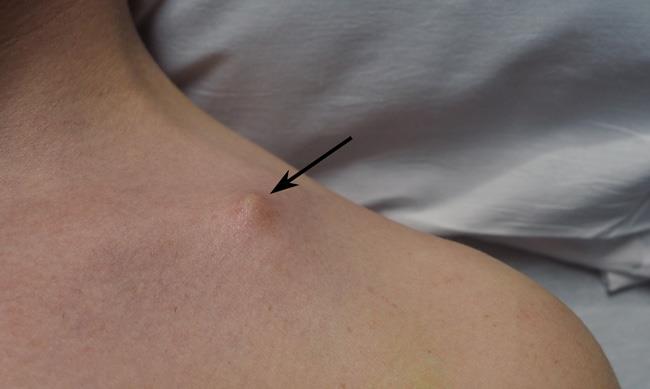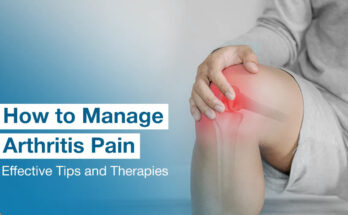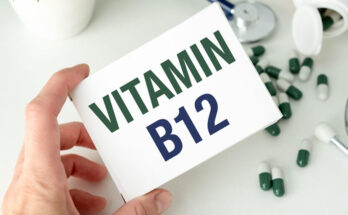Broken Collarbone Symptoms: A broken collarbone, or clavicle fracture, is a common injury that occurs in people of all ages. It’s particularly prevalent among athletes and individuals involved in high-impact sports or accidents.
Understanding the symptoms and causes of a broken collarbone is crucial for prompt diagnosis and effective treatment.
What is a Broken Collarbone?
A broken collarbone, medically known as a clavicle fracture, is a common injury involving a break in the collarbone, a long bone that runs horizontally between the top of the breastbone and the shoulder blade. This type of fracture typically occurs due to a fall onto the shoulder or an outstretched arm, making it a frequent occurrence in sports injuries and accidental falls.
Statistics: Incidence Rate and Common Demographics Affected
The incidence rate of broken collarbones is significant, particularly in active populations and certain age groups. Generally, young adults and children are more susceptible due to their high levels of physical activity and participation in sports. The nature of the injury also sees a higher prevalence in sports like cycling, skiing, and contact sports where falls or collisions are common.
In terms of demographics, males are more likely to experience a clavicle fracture than females, primarily due to higher engagement in risk-prone sports and physical activities. Additionally, infants can also suffer from broken collarbones during the birthing process, although this is less common.
Understanding the demographics and incidence rates of broken collarbones is crucial for developing targeted prevention and treatment strategies. It also helps in raising awareness among those most at risk, such as athletes and active children, about the importance of proper safety measures and timely medical intervention.
Symptoms of a Broken Collarbone
Understanding the symptoms is crucial for timely diagnosis and treatment. Here’s an overview, divided into primary and secondary symptoms, and advice on when to seek medical attention.
Primary Symptoms
Pain and Tenderness: The most immediate symptom of a broken collarbone is a sharp pain in the area. This pain intensifies when you try to move your arm or shoulder.
Swelling and Bruising: Swelling and bruising around the collarbone area are common. The skin may appear discolored.
Audible Snap or Grinding Noise: At the time of injury, you might hear a snap or grinding noise, indicating a fracture.
Visible Deformity: In some cases, the broken ends of the bone may cause a noticeable bump or change in the shape of your collarbone area.
Secondary Symptoms
Difficulty in Moving the Arm: You may find it challenging to lift your arm due to intense pain or stiffness in the shoulder.
Numbness or Tingling: Sometimes, the injury can affect nearby nerves, leading to numbness or tingling sensations in the arm.
Sagging Shoulder: The shoulder on the side of the broken collarbone may sag downward and forward.
Muscle Spasms: Muscle spasms in the surrounding area can occur, contributing to the pain and discomfort.
When to Seek Medical Attention
Immediate Care Required: If you experience severe pain, noticeable deformities, or an inability to use your arm, seek immediate medical care.
Signs of Complications: Symptoms like increasing swelling, redness, or warmth around the injury, or fever, could indicate complications and need prompt medical attention.
Persistent Symptoms: If your symptoms do not improve or worsen over a few days, it’s important to consult a healthcare professional.
Advice on When Symptoms Indicate a Need for Immediate Medical Care
Immediate medical attention is crucial in cases of severe pain, visible deformities, symptoms of shock (like dizziness or fainting), and inability to move the arm. These symptoms could indicate a severe fracture or associated injuries to nerves and blood vessels. Timely medical intervention can prevent complications and ensure proper healing.
Causes of a Broken Collarbone
Understanding the causes and risk factors can help in prevention and provide insights into the nature of this injury. Here’s an overview of what leads to a collarbone fracture.
Common Causes
Falls: One of the most prevalent reasons for a broken collarbone is falling. This can happen in various scenarios, such as during sports, slip and fall accidents at home, or on icy surfaces. When you fall, instinctively extending an arm to break the fall can transfer significant force to the collarbone, leading to a fracture.
Sports Injuries: Contact sports like football, rugby, and martial arts, or high-impact activities like mountain biking and skateboarding, carry a higher risk of collarbone fractures. The direct impact or fall associated with these sports can cause the collarbone to break.
Vehicle Accidents: Car, motorcycle, or bicycle accidents can cause severe trauma to the shoulder area, resulting in a broken collarbone. The sheer force of impact in such incidents is often enough to break bones.
Less Common Causes
Birth Injuries: In some cases, newborns can sustain a collarbone fracture during the birthing process, especially during a difficult or assisted birth, like with forceps or vacuum extraction.
Pathological Fractures: These occur when an underlying disease, like osteoporosis or cancer, weakens the bone, making it more susceptible to breaks even with minor trauma.
Risk Factors
Certain factors can increase the likelihood of experiencing a collarbone fracture:
Age: Younger individuals, particularly children and teenagers, are more prone to collarbone fractures due to their high levels of physical activity and riskier play. Older adults might also be at risk due to weaker bones.
Participation in Certain Sports: Engaging in high-impact or contact sports significantly increases the risk of a collarbone fracture.
Osteoporosis: This condition weakens bones, making them more susceptible to fractures from even minor falls or impacts.
Genetic Factors: Some people may have a predisposition to weaker bones or conditions that affect bone density and strength.
Diagnosing a Broken Collarbone
Medical Examination
When suspecting a broken collarbone, the initial step is a thorough medical examination. Upon visiting your doctor, expect a detailed review of your symptoms and medical history. This process will likely start with your doctor asking about the nature of your injury, how it occurred, and the specific symptoms you’re experiencing. Be prepared to discuss any pain, swelling, or difficulty moving your arm.
The physical examination is crucial. Your doctor will gently palpate (touch) the area around your collarbone to check for tenderness, swelling, or deformity. This hands-on approach helps in identifying the exact location and severity of the break. They may also assess your arm’s range of motion and check for any signs of nerve or blood vessel damage around the collarbone area.
Imaging Tests
After the initial examination, diagnostic imaging tests are often the next step. These are crucial in confirming the diagnosis of a broken collarbone and understanding its specifics.
X-rays: This is the most common and readily available test. X-rays can clearly show if there is a break in the bone and its exact location. They can also reveal the severity of the break, whether the bone is displaced or if there are multiple fractures.
Magnetic Resonance Imaging (MRI): While not always necessary, an MRI may be recommended in complex cases. MRIs provide a more detailed image of the collarbone and are particularly helpful in identifying injuries to the surrounding soft tissues, such as ligaments and tendons.
Remember, the quicker a broken collarbone is diagnosed and treated, the better the chances are for a full and swift recovery. If you have symptoms that suggest a collarbone fracture, do not hesitate to consult a healthcare professional.
Treatment Options for a Broken Collarbone
The treatment approach can vary, ranging from non-surgical to surgical methods. Understanding these options is crucial for effective recovery.
Non-Surgical Treatments
Non-surgical or conservative treatment is often the first line of action for a broken collarbone, especially in cases where the break is simple and bones are aligned properly.
Immobilization with Slings: A fundamental step in non-surgical treatment is to immobilize the affected area. This is typically achieved using a sling. The sling helps to keep the arm and shoulder from moving, thereby facilitating the natural healing process of the bone.
Pain Management: Managing pain is an integral part of treating a broken collarbone. Over-the-counter pain relievers, such as acetaminophen or ibuprofen, are commonly recommended. It’s crucial to follow the dosage instructions provided by a healthcare professional to avoid any complications.
Physical Therapy: After a period of immobilization, physical therapy may be advised. This involves exercises aimed at restoring strength and flexibility in the shoulder.
Follow-up Appointments: Regular check-ups are necessary to monitor the healing process. These appointments allow the healthcare provider to make adjustments to the treatment plan if needed.
Surgical Treatments
In certain situations, surgery may be required to treat a broken collarbone. This is particularly true in cases where the break is severe, such as when the bone is fragmented or displaced.
Indications for Surgery: Surgery is generally considered when the bone ends are significantly displaced or if the skin is broken, indicating a compound fracture. It’s also a viable option if non-surgical treatments do not result in proper healing.
Surgical Procedure: The surgical approach often involves repositioning the broken bone pieces into their normal alignment and then securing them with metal hardware, such as plates and screws. This procedure not only aligns the bone but also accelerates the healing process.
Post-Surgery Care: After surgery, pain management and rehabilitation are critical. The recovery process may include wearing a sling, followed by physical therapy to restore mobility and strength.
Risks and Complications: Like any surgery, there are risks involved, including infection, nerve damage, or complications related to the hardware. Discuss these potential risks with the surgeon before proceeding.
However, the treatment of a broken collarbone depends on the severity and nature of the fracture. While non-surgical methods are effective for simpler cases, surgical intervention may be necessary for more complex fractures. It’s essential to consult with a healthcare provider to determine the best course of action for individual circumstances. Remember, proper treatment and follow-up are key to a full and speedy recovery.
Prevention and Precautionary Measures of Broken Collarbone
Prevention not only spares you the discomfort and limitations of a broken collarbone but also saves time and resources that would otherwise be spent on treatment and recovery.
Tips on Preventing Collarbone Injuries
Wear Protective Gear: If you’re engaged in contact sports or activities with a high fall risk, like cycling or skateboarding, wearing protective gear is essential. This includes padded clothing, proper helmets, and specialized gear designed to protect the collarbone area.
Practice Safe Sports Techniques: Proper technique is crucial in sports. For instance, learning how to fall safely in sports like skiing or football can significantly reduce the risk of breaking your collarbone.
Strengthen Surrounding Muscles: Strengthening the muscles around your collarbone, like your chest, back, and shoulder muscles, can provide better support and reduce the risk of fractures. Incorporate exercises that target these areas into your fitness routine.
Maintain a Healthy Bone Density: A diet rich in calcium and vitamin D, along with regular exercise, can help maintain healthy bone density. This is particularly important as you age since bone density naturally decreases over time.
Lifestyle and Activity Adjustments to Reduce Risk
Adjust Your Home Environment: Remove trip hazards in your home to prevent falls. This is especially important for older adults, who are more prone to falls and fractures.
Be Cautious in Hazardous Conditions: In conditions like icy or wet weather, be extra cautious. Wear shoes with good traction and avoid risky activities during these times.
Educate Children on Safe Play: Teach children the importance of playing safely and the risks associated with rough play. Encourage the use of protective gear when they’re engaging in sports or cycling.
Regular Health Check-ups: Regular check-ups can help identify issues like osteoporosis, which increases the risk of fractures. Early detection and treatment can significantly reduce these risks.
Preventing a broken collarbone involves a combination of protective measures, lifestyle adjustments, and awareness of the risks involved in certain activities. By taking these precautionary steps, you can significantly reduce the likelihood of experiencing this painful and limiting injury. Remember, prevention is always better than cure. Stay safe and protect your collarbone by being proactive in your approach to injury prevention.
FAQs about Broken Collarbone Symptoms and Causes
Understanding the symptoms and causes of a broken collarbone is crucial for prompt diagnosis and treatment. Here’s a comprehensive FAQ section to address common queries on this topic:
What are the typical symptoms of a broken collarbone?
- Severe Pain: Immediately after the injury, you might experience sharp, intense pain.
- Swelling and Tenderness: The area around your collarbone will likely swell and become tender to the touch.
- Bruising: Expect some bruising or discoloration on the skin over the injured area.
- Sagging Shoulder: The shoulder on the affected side may sag downward and forward.
- Difficulty in Arm Movement: You may find it hard to move your arm on the side of the broken collarbone.
What causes a broken collarbone?
- Falls: Landing on your shoulder or an outstretched arm during a fall.
- Sports Injuries: Contact sports like football or activities like cycling can lead to this injury.
- Trauma: A direct blow to the shoulder from a car accident or other traumatic events.
- Birth Injury: Newborns can break their collarbones during the birthing process.
Can a broken collarbone heal on its own?
A broken collarbone can heal on its own with proper rest and immobilization. However, severe cases may require surgical intervention.
How can I tell if my collarbone is broken or just bruised?
A broken collarbone will usually cause more severe pain, swelling, and an inability to use the arm. A doctor’s evaluation, often including an X-ray, is the best way to determine the extent of the injury.
Are certain people more prone to breaking their collarbone?
Yes, individuals engaged in high-risk sports, young adults, and children are more prone to such injuries due to increased physical activities and falls.
What should I do if I suspect a broken collarbone?
Seek immediate medical attention. Avoid moving the injured area and apply ice to reduce swelling until you receive professional care.
Can poor posture lead to a broken collarbone?
Poor posture alone doesn’t typically cause a broken collarbone, but it can contribute to overall shoulder weakness and susceptibility to injury.
How long does it take for a broken collarbone to fully heal?
Healing time varies, but generally, it takes 6-12 weeks for a broken collarbone to heal. The duration can depend on the severity of the break and the individual’s overall health.
Is it possible to prevent a broken collarbone?
While not all cases are preventable, wearing appropriate safety gear in sports, practicing good posture, and avoiding risky activities can reduce the risk.
Can a broken collarbone lead to complications?
In some cases, a broken collarbone can lead to complications like nerve or blood vessel damage, a lump at the fracture site, or delayed healing.
Conclusion
While self-education and awareness are crucial, they are not substitutes for professional medical advice. This article serves as a beacon, guiding you towards understanding the importance of symptoms and their causes. However, it is imperative to remember that a thorough and accurate diagnosis can only be made by a healthcare professional.
Seeking medical advice is not just a form of self-care; it’s an act of responsibility towards oneself. Professionals in the medical field have the expertise, experience, and tools necessary to diagnose and treat health issues effectively. They provide not just treatment plans but also peace of mind, knowing that your health concerns are being addressed by experts.
In conclusion, while recognizing symptoms and understanding their causes is a critical first step, it should always lead to seeking professional medical advice. This approach ensures that you receive a comprehensive evaluation and the most effective treatment. Let this be your call to action: prioritize your health by being observant, informed, and ready to consult with healthcare professionals when needed. Your well-being deserves nothing less.



